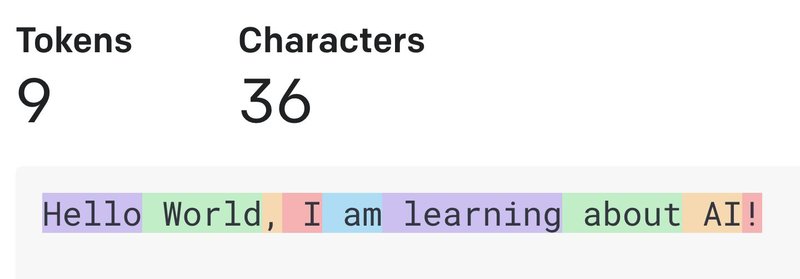Developers, Add AI To Your Toolkit in 10 Minutes
Learn how to integrate Generative AI into your apps with this in-depth JavaScript and OpenAI tutorial.


This article was originally posted as a guest post in the Builder.io blog.
Generative AI has been exploding recently, and we encounter the terms “ChatGPT”, “LLMs” and “Agents” several times a day. With so many new developments and powerful tools, it’s hard to keep up. In this article, you’re going to learn all the basics so you can officially add AI to your toolbox.
Now is our time
I’m a developer at heart. And when I say “our”, I mean us — developers. The recent (and upcoming) advancements in AI can safely be called a paradigm shift. Here’s why.
Traditionally, for a business to use AI, they would have to:
- Hire top talent across various fields (data science, AI/ML) for model development.
- Gather, scrape, or buy a lot of data to train the model.
- Buy/rent expensive hardware for each training run.
- Test, reinforce/fine-tune, and deploy the model to production in a scalable way.
Today, anyone can benefit from AI — it’s one API call away. These APIs tend to be affordable, easy to consume and reliable for most tasks.
This makes AI very attractive for projects at all stages. Now that AI is not exclusive to fortunate enterprises, we developers are going to spearhead the implementation of AI at a world scale.
What is an LLM?
LLMs (Large Language Models) are models that are trained on billions of parameters. These are different than traditional AI models that are trained to accomplish a very specific task.
LLMs are trained to understand natural language. This is very powerful because such models can connect more dots. You can use LLMs to produce content, analyze sentiment, write code, validate outputs, provide customer support, and much much more.
Some LLMs are open-source — such as Falcon, Mistral, Llama 2 — and some are closed-source and served through an API — such as, OpenAI GPT, and Anthropic Claude. In this article, we’ll focus on OpenAI.
Getting started
Getting an OpenAI API key
First you’ll need to sign up at OpenAI and obtain an API key. Once obtained, make sure you set it as an environment variable (
OPENAI_API_KEY).
Setting up the project
Create an
app.tssomewhere in your file system. Initialize a new NPM projcet (
npm init -y) and make sure to install OpenAI client (
npm i openai). You should be good to go!
Calling the OpenAI API
Here’s an example of how we’d call the OpenAI API using the OpenAI Client:
Let’s quickly go through what’s going on here.
First, we import
OpenAIfrom the
openaiNPM package
Then, we initialize a new OpenAI client. We don’t provide an API key explicitly, as it is automatically fetched from the
OPENAI_API_KEYenvironment variable set earlier.
Finally, we create a Chat Completion. “A Chat Completion? What is that?” you might be thinking. Let me explain.
Chat Completions
OpenAI provides various APIs. DALL-E for image generation, Whisper for audio transcription, Embeddings API, and so on. Probably the most well-known and used API is the Chat Completions API. Basically, creating a chat completion means having a chat with the AI model.
Despite the term “chat”, it is not exclusively used in chat applications only. Chat Completions can be used in single operations/tasks as well. It’s just the most capable API that supports the most capable models (
gpt-3.5-turboand
gpt-4).
Options
When creating a new Chat Completion, you’ll provide some options. Let’s overview some of them:
model
: The model you want to use for this particular call. In this example, we use gpt-3.5-turbo.temperature
: How creative we want the AI model to be. Zero would mean no additional creativity beyond baseline, and 1 would mean maximum creativity. If your tasks require precision, attention to detail and factuality, definitely set this to 0.max_token
: The maximum amount of tokens to retrieve in the response. We’ll talk about tokens later in this article. In short, this is your opportunity to limit the response length, save on costs and help reduce latency.messages
: This is where the magic happens. Here, you’ll provide a set of messages. This can be anything from one message for a basic task/operation, to a set of messages to represent a full chat history. You’ll spend most of your time here.
For the full list of options, check out the OpenAI API documentation.
Messages
As I mentioned earlier, the
messagesproperty is where the magic happens. Each item in this array represents a message. A message can hold two properties. First, there is the
role, which an be one of the following:
system
: Use system messages to provide guidelines, set boundaries, provide additional knowledge or set the tone. Imagine this as some “inner voice” that the AI model will take into account when generating responses.user
: This represents messages sent by the user. For example, if you are building a chat app, you want to send the user’s messages as user messages.assistant
: These messages represent the AI model’s responses.
Basic Example
The response to that would be:
Now, let’s find out how I can add a System Messages to control the behavior of the AI model:
And the response:
Pretty cool! We can use the system message to dictate how the AI model should behave, depending on our needs.
More examples
Let me share a few more examples in which utilizing the System Prompt is useful:
1. Example: providing knowledge:
Consider this example — a user asks an AI customer support bot for stock information on shoes:
The response:
In this example, we have provided the AI model with information about stock availability using simple CSV format. It could also be JSON, XML, or anything else. LLMs can handle it!
2. Setting boundaries
LLMs will try to satisfy the user no matter what. They are trained to do that. What if our business use case requires stricter boundaries? Take a look at the following example:
The response:
3. Structured JSON Output
Imagine that we want to use AI for a single task, rather than a chat app. We want to be able to render the output of the AI response in some UI. This is obviously not possible with the traditional text responses. Here’s how we can approach it:
The response:
Check that out! It’s a perfectly valid JSON response that you can
JSON.parse, return to a front end, and render!
If you require structured responses, keep temperature at 0, and check out the OpenAI Function Calling feature. It’s very powerful. Let me know if you want me to write an article about OpenAI Function Calling!
Keep track of usage
A response from OpenAI is something like this:
Notice the
usageproperty. It mentions the number of tokens used in the request, the response, and in total. But what are those tokens?
Sometimes it’s easy to think that LLMs truly understand words. However, that’s not exactly how it works. It’s far easier for LLMs to understand tokens.
Tokens are numeric representations of strings, part of strings, or even individual characters. Essentially, the words we provide to the LLM becomes a set of floating numbers, which the model can then process in an easier, more performant way.
For example, the text
Hello World, I am learning about AIequals 9 tokens. How exacly?
The algorithm used for tokenization has tokenized this sentence as follows:
This is a fascinating topic, but for the sake of this tutorial, just know that your text inputs are handled post-tokenization, and you are billed per token, in the input (request/prompt) and the output (response) output. This is usually billed per 1,000 tokens, and the response tends to be more expensive than the request. Check out the OpenAI Pricing page to view the exact cost.
It’s important to mention that different models also have different token limits. For example, at the time of writing this,
gpt-3.5-turbohas a token limit of 4097 tokens in total (request and response combined). You can find more information about token limits per model in the OpenAI documentation.
How can I calculate the tokens myself?
There are various tools available online to help you calculate the tokens. I really like the OpenAI Tokenizer. However, depending on the model you’re using, it might not always be 100% accurate.
The Python ecosystem is fortunate to have a package called
tiktokenthat really helps with that. We are fortunate to have talented folks in our ecosystem who ported it to JavaScript/TypeScript! My favorite one is @dqpd/tiktoken. It works very well and is very reliable.
If you are counting tokens in a production environment, I suggest you take a 5%-10% margin for error. These tokenizers are not always accurate. Better safe than sorry!
Tips
- Use the OpenAI Tokenizer to learn how tokens work and get an (almost accurate) idea of token usage.
- Use the OpenAI Playground to practice prompt engineering without writing a single line of code.
- Use Pezzo as a centralized prompt management platform to collaborate with your team and iterate quickly, as well as observe and monitor your AI operations and costs. It’s open-source! (disclaimer: I am the founder and CEO).
- Consider taking my AI For JavaScript Developers course on Udemy. I’ve so far educated over 200,000 students on Udemy, and this 2-hour crash course is meant for developers like you and me, who want to add AI to their toolbox. We build real-world apps powered by AI and cover Function Calling, Real-time Data, Hallucinations, Vector Stores, Vercel AI SDK, LlamaIndex, and more!
AI Pieces Newsletter 🕹️
